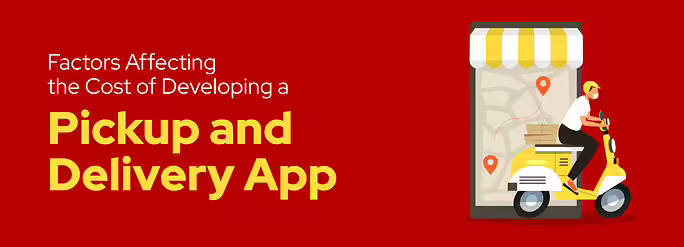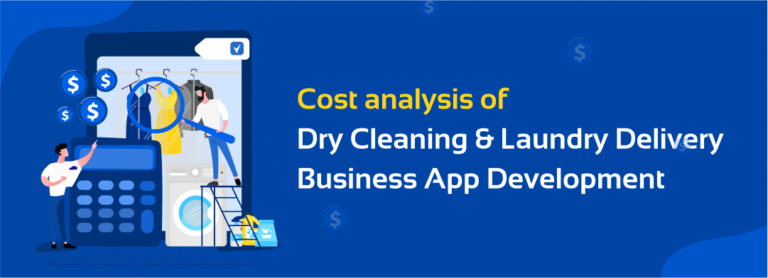How Much Does It Cost To Develop A Pickup And Delivery Mobile App?


Creating a high-quality, customer-appealing pickup and delivery app specifically tailored to a particular region or country is no simple feat. Constructing such a platform requires extensive knowledge of the many components that come into play, such as the cost of development. In this article, we will analyse the various factors that can influence the cost of creating a pickup and delivery app. We will also look at the usual features associated with such an app and provide an estimate for the cost of development.
Table Of Contents
Understanding The Cost Of Developing A Pickup And Delivery App
Overview Of Pickup And Delivery App Development:
Pickup and delivery apps are becoming increasingly popular due to the convenience and reliability they offer customers. Developing a pickup and delivery app requires a detailed understanding of the necessary technology and resources. This section will provide an overview of the cost and steps involved in developing a pickup and delivery app.
The cost of developing a pickup and delivery app can vary depending on the complexity of the app and the resources required. The cost can range from $10000 to $50000. The cost includes the development of the app, hosting services, user interface design, and other related services.
The development of a pickup and delivery app involves several steps, including designing the user interface, coding the app, testing the app, and deploying the app. The first step is to design the user interface, which should be intuitive and easy to use. The next step is to code the app, which includes writing the code for the features, functionalities, and integrations. After the coding is complete, the app needs to be tested for bugs and errors before it can be deployed. Once deployed, the app needs to be monitored and maintained regularly to ensure optimal performance.
Factors That Affect Pickup And Delivery App Development Costs
The on-demand economy has skyrocketed, making pickup and delivery apps a must-have for businesses in many industries. Developing such an app, however, can be costly. That’s why, in this blog post, we’ll be exploring 15 factors that influence the cost of a pickup and delivery app. Stay tuned to learn how to make sure you get the best bang for your buck!
App Purpose:
The development cost of an app can be greatly influenced by its purpose, complexity, target audience, and intended use case. Unlocking the potential of these components can truly make a difference in the amount spent to bring your app to life
App Platform:
The platform you decide to build your app on can drastically affect your expenses. Developing multiple operating systems, such as iOS and Android, can mean added costs.
App Design:
The design of the app can have a major effect on development expenses. A complex, detailed design may require additional resources, time, and skill to create.
User Authentication:
Investing in reliable and safe user authentication systems can boost development expenses.
Payment Integration:
The implementation of payment gateways and mechanisms may bring with it an added expense in development – including the integration of third-party systems and the attainment of security compliance.
Geolocation And Tracking:
Geolocation and tracking features can require more development effort, which can result in higher development costs.
Integrations:
Connecting the application to other external systems can increase development costs while linking up to other logistics and transportation systems can add complexity to the development journey.
Language And Localization:
Developing an app that supports multiple languages and regions can significantly impact the development costs.
Push Notifications:
Implementing push notifications to keep users informed about order status, delivery status, or any other important information can increase development costs.
Database Integration:
Integrating with databases and ensuring database security can increase development costs.
Testing:
To guarantee top-notch performance, thorough testing of the app is non-negotiable – though it can be an investment of extra resources and time.
Maintenance And Support:
Once the app is live, ongoing maintenance and support are key components in the total cost of development. It takes extra resources and know-how to ensure successful upkeep and assistance.
Server Costs:
Developing and maintaining the server infrastructure can add to the development costs.
Timeframe:
The development timeframe can impact the development costs. Tighter timelines may require more resources, leading to higher costs.
Team Expertise:
An experienced development team with a proven track record may charge higher fees, but they may also be able to deliver higher-quality results more efficiently.
The expertise and experience of the development team play an important role in the cost of app development. An experienced development team with a successful track record may demand higher fees, but in return can deliver outstanding results more efficiently.
Conclusion:
In conclusion, developing a pickup and delivery app requires careful planning and consideration of the cost and resources involved. By understanding the cost, steps, and resources needed, businesses can ensure that their app meets their needs and delivers the best possible experience for their customers.

The Author
Gopinath Murugaiyan
Managing Director




